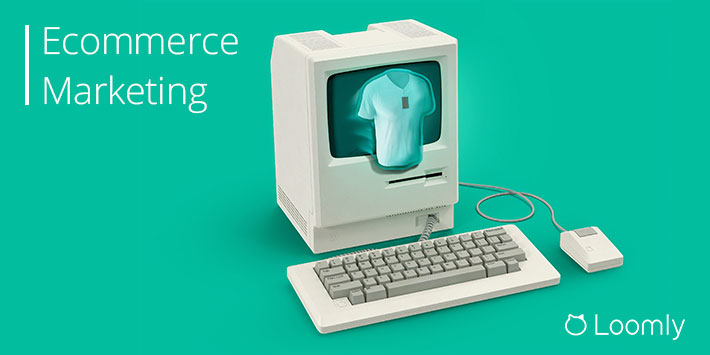Global retail ecommerce sales are set to increase from $3.5 trillion in 2019 to $6.5 trillion by 2023, according to Statista.
Fueled by the pandemic, the stock price of ecommerce platforms Shopify and Amazon has rocketed:
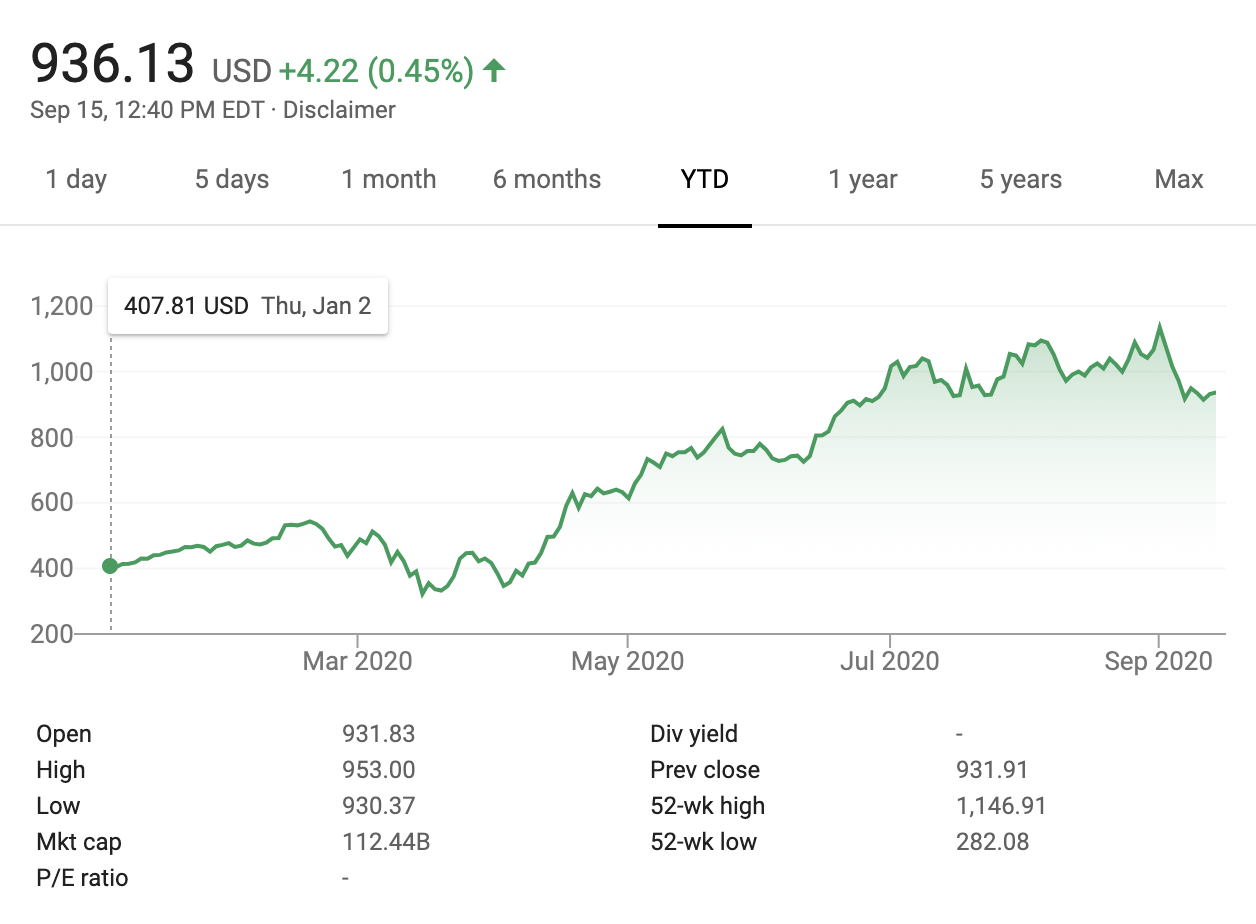
This accelerated growth is forcing major players to extend their ecommerce programs, like Walmart Plus rivaling Amazon Prime. At the same time, smaller businesses are also jumping on the ecommerce bandwagon and setting up online stores.
Setting up your online store is one thing. But how do you go about promoting it?
In this guide, you’ll learn how to design and implement a successful ecommerce marketing strategy for your brand.

Manage all your social media accounts in one place.
Craft, schedule, & auto-post content to all your social channels, then track analytics and manage interactions from a single, easy-to-use dashboard.
What is Ecommerce Marketing?
Ecommerce refers to the buying and selling of goods or services via the internet, and the transfer of money and data to execute those transactions.
Ecommerce, also known as electronic commerce or internet commerce, is most commonly used to describe the sale of physical products online. But it covers all commercial transactions that use the internet.
Ecommerce marketing is the practice of promoting and selling your online products or services through a variety of marketing channels, such as social media platforms, search engines, and email campaigns. An ecommerce marketing strategy can help you build brand awareness, drive online sales, and increase customer loyalty.
Why is Ecommerce Marketing Key
Technology and globalization are taking down traditional barriers, making it easier for anyone and everyone to launch an online store.
Plus, the COVID-19 pandemic is forcing many brick-and-mortar businesses to go online quicker than they probably intended.
All of which means there’s more competition for consumers’ attention and dollars.
Throwing up an online store and hoping for the best won’t work. Brands need an ecommerce marketing strategy if they want to be successful.
Examples of Successful Ecommerce Marketing Strategy
Let’s take a look at a few successful ecommerce brands from various sectors.
D2C brands
Direct-to-consumer (D2C) brands sell their products or services through their own channels without the need for third-parties or intermediaries. You can consider them as the “pure players” – brands that started online rather than transitioning from brick-and-mortar businesses.
D2C brands are often referred to as DNVBs — Digital Native Vertical Brands — because of their ability to scale vertically. For instance, they have the option to:
- Enter physical retail by opening stores and providing experiences
- Expand online retail through partnerships and collaborations
For example, sustainable footwear brand Allbirds started online before opening physical stores.

On the other hand, D2C giants Amazon have expanded their online retail empire by allowing third-parties to sell on their site through a selection of programs.
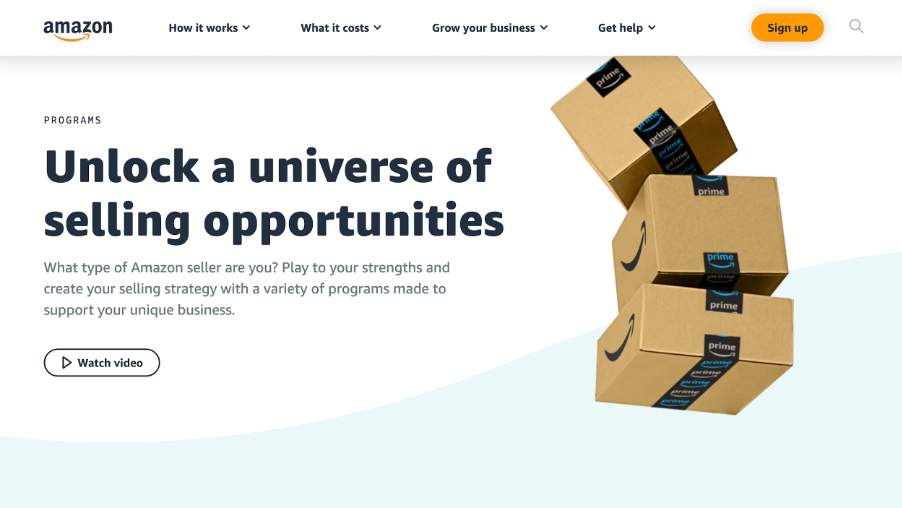
Legacy brands with physical stores
Established brick-and-mortar brands, like Sephora and Nike, have been quick to embrace ecommerce and create an online retail experience for their customers.
Sephora is the largest luxury group in the world, with stores in 34 countries across Europe, the Middle East, America, and Asia. And since 1999, it’s also been available online via a portal of 17 online sales sites accessible in 10 different languages.

Nike is the world’s most valuable sportswear and apparel brand. Not only do they sell their products online, but they’ve also created several online initiatives like their Run Club and Adventure Club to remain competitive and different from their competitors.
Mom-and-pop shops
Mom-and-pop shops typically refer to small family-run businesses that focus on selling personalized products and services, which are difficult for big companies to provide.
Although they can be local, many solopreneurs have opened online stores, either in marketplaces like Etsy and eBay or on ecommerce platforms like Shopify, which has allowed them to reach global audiences.
For example, independent yarn dyer Countess Ablaze started her online business dying and selling yarn from home. Several years later, through creative ecommerce marketing, she now has a dye studio in Manchester’s artisan Northern Quarter where she sells her hand-dyed yarn, plus guest yarns, in-store (COVID19-permitting) or online.

B2B brands
B2B ecommerce covers online order transactions between businesses. Even though B2B is usually more complicated, enterprises want a B2C-like online shopping experience.
For example, Berlin Packaging supplies packaging services, including bottles and containers, to companies in the beverage, food, personal care, pharmaceutical, household care, industrial, and coatings sectors.
You can browse their online store and add items to your cart, just as you would on any other B2C ecommerce site.
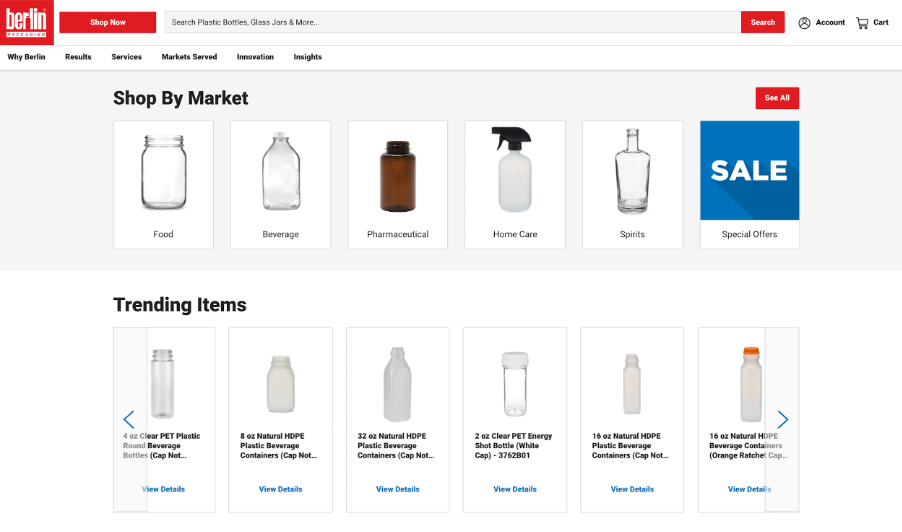
Likewise, Atlanta Light Bulbs (ALB) supplies every type of lighting technology, including lighting controls, ballasts, incandescent, halogen, fluorescent, LED lighting, and smart lighting to hospitals, warehouses, and more.
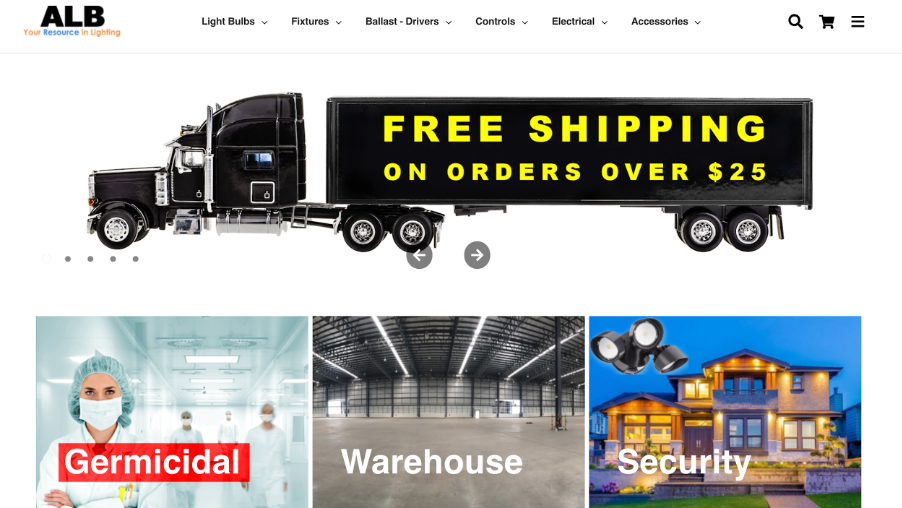
Government portals
It’s not only businesses that have embraced ecommerce. Governments also use ecommerce to serve businesses (G2B) and individuals (G2C).
For example, on the GOV.UK portal, businesses can pay their company taxes, while motorists can pay for their vehicle tax.
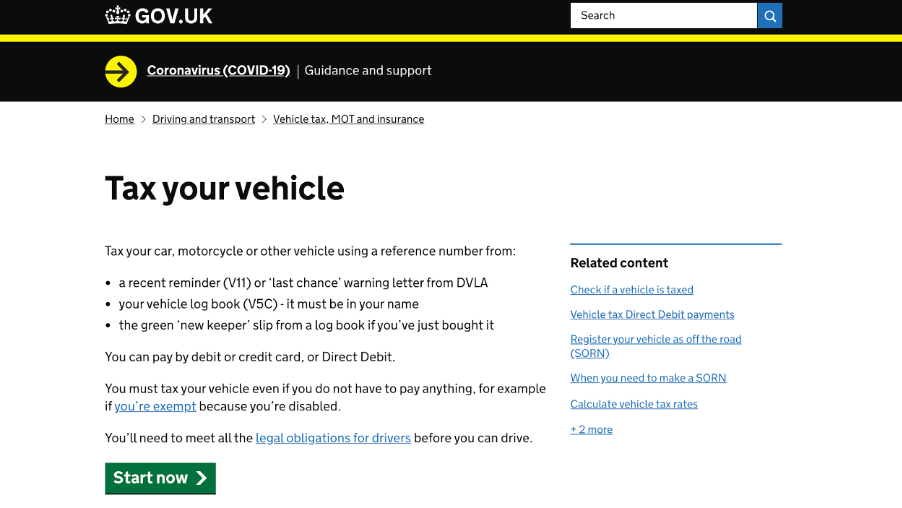
Ecommerce has leveled the playing field for consumers, businesses, and governments all around the world so that brands can operate locally or globally, online or offline. But no matter how they function, they’ll need to implement an ecommerce marketing strategy if they’re to succeed.
How to Design and Implement a Successful Ecommerce Marketing Strategy
In this section, we’ll outline four steps for you to design and implement a successful ecommerce marketing strategy.
Step 1. Identify your business goals
It’s crucial to define your business goals based on your circumstances. For example, goals will most likely differ if you’re just launching your store compared to scaling your business. Likewise, you’ll have different goals for running a seasonal campaign compared to launching a product.
So take the time to align your business goals and ecommerce marketing goals. For example:
- Business goal – increase brand awareness / Marketing goal – increase followers and engagement on Instagram.
- Business goal – increase customers / Marketing goal – increase online leads and conversions.
Next, take the goals one step further with specific metrics like:
- Increase Instagram followers by 5% during Q1.
- Increase email marketing conversion rates by 2%.
- Increase AOV by 10% for Black Friday and Cyber Monday campaigns.
Step 2. Define your action plan
Having established your business goals, you need to define your action plan. For example:
- Know your audience and market.
- Select your marketing channels.
- Create an editorial calendar.
- Produce and publish high-quality content.
- Engage with your audience.
Let’s take a look in detail.
1. Know your audience and market
It’s imperative to know who you’re targeting with your products or services. Otherwise, you’ll waste your budget and attract low-quality leads. For instance, make sure you know the following:
- Age ranges
- Gender breakdown
- Geographic location
- Competition
2. Select your marketing channels
Ecommerce brands can use the same marketing channels as other digital brands to promote and grow their business.
Let’s take a look at some of the options:
SEM
Search Engine Marketing (SEM) refers solely to paid search activities, and includes different types of advertising like:
- Pay-per-click (PPC) Ads – e.g. Google Ads campaigns that appear at the top of search engine results.
- Display Ads – e.g. Banner ads, that appear on websites, apps, and mobile games.
- Product Listing Ads – e.g. Google Shopping Ads that appear within the search engine results.
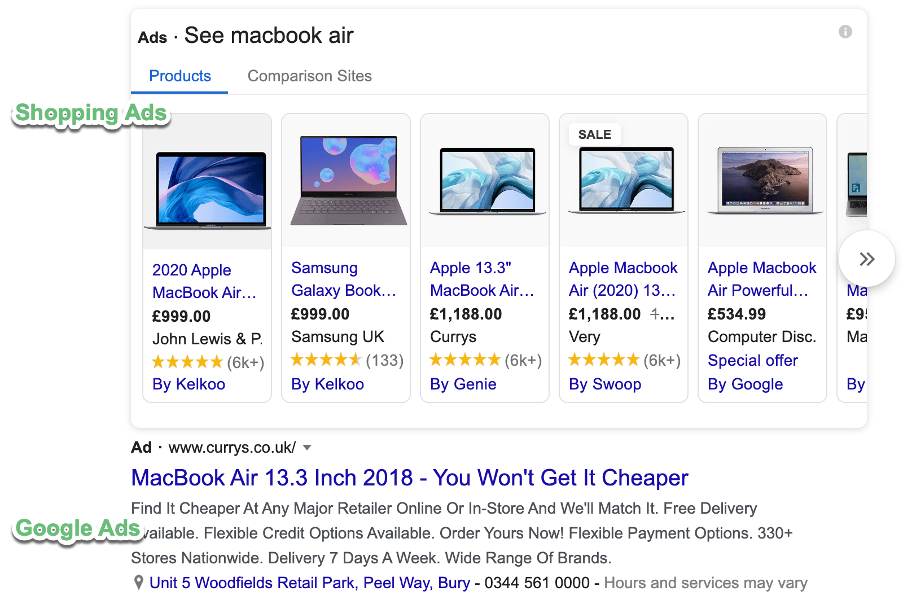
SEO
Search Engine Optimization (SEO) refers to non-paid or organic activities to increase search engine rankings, such as running technical audits, targeting high-intent keywords, creating quality content, and building backlinks.
Content marketing
Content marketing is typically associated with blogging, but it covers any type of content that answers questions related to your brand and improves your search ranking for those terms.
For example, ecommerce marketing uses videos, infographics, category pages, product descriptions, FAQ sections, and more.
Social media marketing
Popular social networks, especially visual platforms like Instagram and Pinterest, can help ecommerce marketers reach their audience. There are 3 applicable types of social media marketing:
- Social media content – e.g. the non-paid (organic) posts published on the various social networks where you can build brand awareness.
- Social media advertising – e.g. the main networks have several types of advertising, similar to PPC, where you pay for impressions and clicks on the respective network.
- Social commerce – e.g. where users can buy products or services without leaving the social network.
Influencer marketing
Influencer marketing is closely related to social media marketing. Brands can link-up with an “influencer” – somebody who has a large following on social media and credibility within their niche – to amplify their message and increase product sales.
Email marketing
Email marketing is intrinsic to ecommerce marketing. There are 2 types of email marketing that you can use:
- Transactional emails contain information that’s unique to each recipient and are used frequently in ecommerce marketing. They’re usually triggered by a user action, and prompt individuals to complete a transaction or process – g. abandoned shopping cart, discounts on recently browsed products, order confirmation, feedback requests, etc.
- Marketing emails, also referred to as commercial emails, are sent strategically at pre-configured times to a list of prospects or customers. They contain marketing and promotional content aimed at getting the recipients to take further action – g. discount coupons, cross-sells, up-sells, upgrades, etc.
Don’t be tempted to try using all of the available marketing channels. Choose the ones suitable for your brand and audience.
3. Create an editorial calendar
An editorial calendar helps you plan, organize, and schedule the content you want to share across the different marketing channels. You can keep track of key elements, such as:
- Which channels you’re posting on.
- The publishing date and time.
- Any required media – pictures, videos, or audio clips.
- Comments, notes, and approvals from team members as the content is created.
- Post-publishing metrics, such as likes, comments, shares, and visits, to track the success of each item.
For example, here at Loomly, we use an editorial calendar to plan the next 12 weeks of content for our blog, so we can:
- Structure our content
- Research keywords
- Write the content
- Optimize posts
- Publish on time
An editorial calendar also facilitates more efficient workflows, as we’ll see in the next step.
4. Produce and publish high-quality content consistently
An approval workflow ensures your content is reviewed before it’s published, so it’s posted at the right time, in the right place, by the right person.
For example, a robust approval workflow should prevent a Facebook post from being published with a typo in the copy and the wrong image attached.
Depending on your organization, there could be one or many different people involved in the approval workflow.
For example, if you’re a single-person startup, you could use a simple checklist to remind yourself to check your content for spelling and grammar typos, broken links, and incorrect visuals.
On the other hand, if you’re a large organization, you might require a more comprehensive, team-wide sign-off process to collect approval from your legal, marketing, and editorial teams before publishing.
In the long-run, a workflow helps your brand consistently:
- Streamline processes
- Reduce errors
- Publish at a much faster rate
- Save money
5. Engage with your audience
Finally, you’ll need to decide how you’re going to engage with your audience as publishing content is only one part of a marketing strategy.
For example:
- If you’re offering customer support on Twitter, you’ll need to respond quickly to customer queries.
- If you’re building a community on Instagram, you’ll need to reply to comments and share user content.
Here are 2 tactics to consider adding to your plan:
Talk to your customers
Consider adding Live Chat to your ecommerce site, so you’re always available to talk with your prospects and customers. If you’re a small team, then use a Chatbot to automate the process as much as possible and then add a personal touch to finish off the conversation.
Run a customer loyalty program
It’s much easier to keep existing customers than acquiring new ones. Consider introducing a customer loyalty program with exclusive perks, offers, and discounts for existing customers. Also, consider running a rewards program where customers earn points on each repeat purchase.
Step 3. Execute your action plan
Having designed your action plan, you’re ready to put it into practice. Here are a few examples:
Running a PPC campaign
If you decide to use paid search advertising, you’ll need to:
- Set up a Google Ads
- Select your goal, like getting more visitors to your store.
- Select the geographic area where your ad should be shown.
- Create your first ad (based on your target keywords).
- Set a budget that works for your business.
- Monitor your account daily.
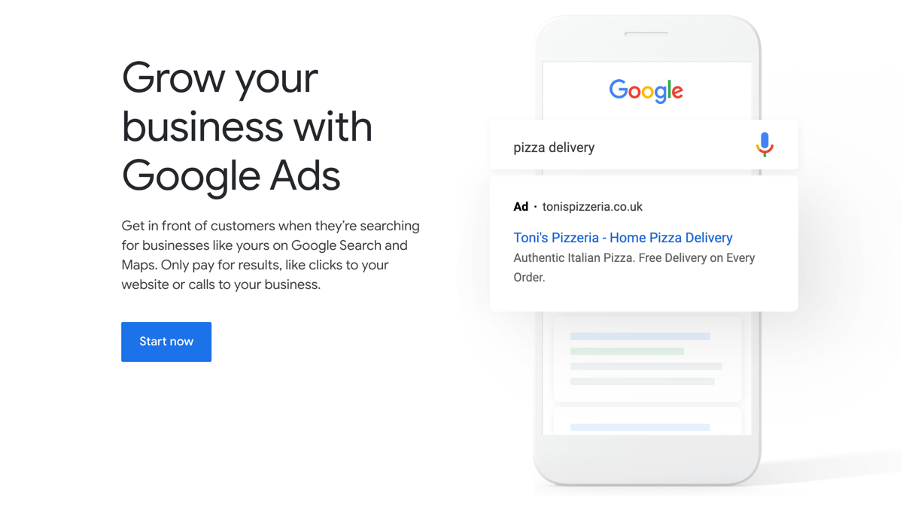
Producing web content
As well as listing your products and services, you’ll want to consider your overall content strategy, including blog posts, category pages, product descriptions, FAQ sections, and more.
For example, top ecommerce store Beardbrand’s mission is to make men awesome through amazing content and class-leading products.
Beardbrand’s blog, the Urban Beardsman, is packed with helpful content on men’s grooming, featuring:
- How to Grow a Thick Beard
- 21 Best Beard Styles
- Beard Oil and Beard Balm
- Hormones and Hair Growth
- How Long to Grow Your Beard

Running a Facebook Ad campaign
Facebook’s advertising platform, which includes Facebook, Messenger, and Instagram, lets you reach millions of targeted people or a small group in your local area. Whatever your goal, it’s likely Facebook has an advertising format to suit.
Here’s how to get started:
- Install the Meta Pixel so you can retarget visitors.
- Set your Campaigns goals – e.g. decide who you’re targeting:
- Awareness: showing new people your brand exists (TOFU).
- Consideration: educating people who are considering products (MOFU).
- Conversion: presenting people with an opportunity to buy (BOFU).
- Define your ad set – g. decide who, when, and how people see your ad:
- Audience: the users your ad will target.
- Placement: where your ad will display.
- Budget & Schedule: how much you will spend over time.
- Build your Ad – g. decide which type of ad format you want to use:
- Story Ads
- Photo Ads
- Videos Ads
- Facebook Carousel Ads
- Instagram Carousel Ads
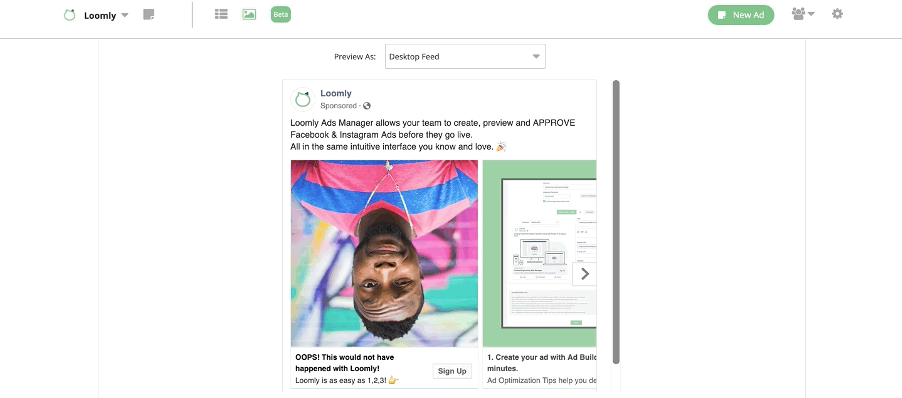
Step 4. Measure your performance
After you’ve implemented your ecommerce marketing action plan, you’ll need to evaluate what worked and what didn’t.
Refer back to Step #1, where you identified your business goals and set your marketing metrics. For example:
- Increase Instagram followers by 5% during Q1.
- Increase email marketing conversion rates by 2%.
- Increase AOV by 10% for Black Friday and Cyber Monday campaigns.
Remember to check:
- Quantitative – e.g. the number of likes, shares, comments, followers, clicks, conversions, and repeat orders.
- Qualitative – e.g. customer reviews and ratings.
Now, measure your success against those goals and metrics to evaluate what worked and what needs adjusting in the next iteration/cycle.
Ecommerce Marketing in a Nutshell
Ecommerce marketing helps you to promote and sell your online products or services using familiar marketing channels such as social media platforms, search engines, and email campaigns.
An ecommerce marketing strategy helps you build brand awareness, drive online sales, and increase customer loyalty.
You can design and implement your ecommerce marketing strategy by following these four steps:
- Identify your business goals (because every brand is different).
- Define your action plan.
- Execute your action plan.
- Measure your performance (and adjust the next campaign if necessary).
